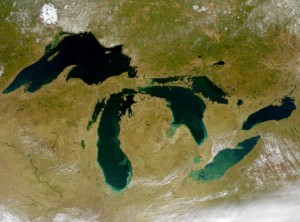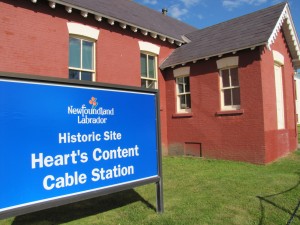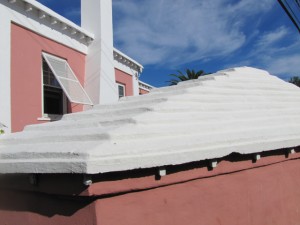I recently had the opportunity to travel to Germany and visited the Deutsches museum in Munich. The Deutsches museum has exhibitions on science and technology. One of my favourites is the Mining exhibit. It contains life-size models of miners in different situations, such as manually drilling blast holes, transporting ore by barges, surveying, hole mining, etc. One interesting fact I learned is that horses, called “pit ponies,” were lowered underground and used in coal mines to haul materials in the past. Below are some of my photos from my visit to the “mines.”
Tag Archives: Places
Science & technology research in Canada
The Council of Canadian Academies recently released a report entitled, The State of Science and Technology in Canada, 2012. It reveals the 6 research fields in which Canada is among the best. These are:
- Clinical Medicine
- Historical Studies
- Information and Communication Technologies
- Physics and Astronomy
- Psychology and Cognitive Sciences
- Visual and Performing Arts
For more information, read the report or watch the video below:
Climate change permits sailing through the Arctic
T hree international sailors made history by being the first crew to successfully cross the M’Clure Strait in Canada’s Arctic Ocean after 90 days at sea. The M’Clure Strait has always been entirely covered by ice. This small crew departed from Newfoundland and is crossing the Arctic to record the melting of polar ice and increase awareness of climate change.
hree international sailors made history by being the first crew to successfully cross the M’Clure Strait in Canada’s Arctic Ocean after 90 days at sea. The M’Clure Strait has always been entirely covered by ice. This small crew departed from Newfoundland and is crossing the Arctic to record the melting of polar ice and increase awareness of climate change.
Visit “A Passage through Ice” for more information about this expedition.
Image from NASA Goddard Space Flight Center
Melting in the Arctic
 Throughout the year, the U.S. National Snow & Ice Data Center in Colorado provides scientific analysis and daily image updates of sea ice in the Arctic Ocean. This research center has recently been in the news due to their reporting that the Arctic sea ice has been melting more quickly this summer, which has resulted in flooding and damage to structures. Their website provides interesting FAQs about sea ice and our climate, such as “What is causing Arctic sea ice decline?”
Throughout the year, the U.S. National Snow & Ice Data Center in Colorado provides scientific analysis and daily image updates of sea ice in the Arctic Ocean. This research center has recently been in the news due to their reporting that the Arctic sea ice has been melting more quickly this summer, which has resulted in flooding and damage to structures. Their website provides interesting FAQs about sea ice and our climate, such as “What is causing Arctic sea ice decline?”
Photo courtesy of: Patrick Kelley (U.S. Coast Guard) and the National Snow and Ice Data Center, University of Colorado, Boulder.
Water catchment in Bermuda
I learned something interesting about Bermuda on a recent trip there. They have beautiful pink sand beaches but no fresh water on the islands. To supply their homes with safe water for drinking and washing they make good use of their roofs.
In the photo here you can see a pyramid-like shape to the roof, used to catch rainwater and direct it to a pipe running alongside the building. Instead of basements they build their homes on top of huge water tanks. Bermuda is relatively free of pollution but the roofs are treated with a limestone wash that purifies the water.
Note also in this photo that the shutters open upwards to allow the fresh air in while providing protection from the sun.
Image by April Colosimo
Climate change and the Great Lakes
 “Earlier this month, researchers at the University of Duluth revealed that the temperature of Lake Superior – the coldest and deepest of the bodies of water that make up the Great Lakes – is sitting at about 20°C, the warmest it’s been in a century.”
“Earlier this month, researchers at the University of Duluth revealed that the temperature of Lake Superior – the coldest and deepest of the bodies of water that make up the Great Lakes – is sitting at about 20°C, the warmest it’s been in a century.”
We have all heard that rising temperatures have the potential to impact almost everything. For example, if water levels decrease, loads of shipping vessels would need to be decreased too and shipping costs would increase accordingly. And if levels shrink to the point that the Great lakes were no longer connected, shipping might discontinue.
Rising temperatures also lead to the growth of toxic algal in Lake Erie, which increases pollution for people living in that region.
If you are interested in keeping track of this topic, you could set up an email alert in a database, such as SCOPUS. Search by the topic, and then click “Set alert” from the top menu of the search results page. You will be able to receive the updates weekly in your email.
Adapted from Climate change and the Great Lakes
A trip to an ASCE monument of the millennium
During a trip to Chicago last week, I had occasion to see one of the American Society of Civil Engineers’ (ASCE) monuments of the millennium, the Chicago Wastewater System. By the end of the 19th century, Chicagoans had heavily polluted the Chicago River by dumping all of their garbage in the water, which flowed into Lake Michigan, the source of the city’s drinking supply. This caused deadly diseases such as cholera and typhus. To solve the problem, the flow of the Chicago River was reversed, sending it in the opposite direction from Lake Michigan.
Here’s a brief documentary on the reversal of the Chicago River:
· · · — — — · · ·
 While in Newfoundland last week I stumbled upon this cable station and learned the story of a man who’s dream it was to run a cable clear across the Atlantic.
While in Newfoundland last week I stumbled upon this cable station and learned the story of a man who’s dream it was to run a cable clear across the Atlantic.
The Heart’s Content Cable Station is a provincial historic site, where, after a few mishaps, Cyrus Field’s telegraph cable reached out to Valencia, Ireland. Cables were already in place across America, which allowed for messages to be spelled out in Morse code (a series of dots and dashes) by telegraph, but before 1866 you would have had to wait patiently for weeks for messages to travel to Europe and back by sea (gasp!).
Learn more about the transatlantic cable and the mammoth ship that carried it, the Great Eastern, from PBS or Wikipedia.
Image by April Colosimo
Transgenic Mosquitoes to Fight Dengue Fever
Brazil will produce 4M transgenic Aedes aegypti mosquitoes per week in order to fight the dengue fever.
“Dengue Fever is a virus spread by the bite of an infected mosquito. There is neither medication nor a vaccine to prevent Dengue Fever so effective measures to control the dengue mosquito Aedes aegypti are urgently required since the disease is becoming geographically more wide-spread, more prevalent and more virulent. The incidence of dengue has increased 30 fold in the last 50 years and, according to WHO, 2.5 billion people are now at risk. The severe form of dengue, known as Dengue Haemorrhagic Fever, was first recognized in the 1950s but has become has become a leading cause of hospitalization and death among children in Asian and Latin American countries.”
Image from: Le Monde Wednesday July 18, 2012 (p.6 section Planète).


